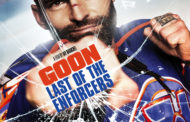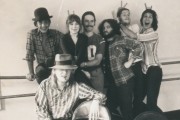 The year 2022. A world with no violence, no crime. Total prosperity and peace. It looks like a society that anyone wants to join. Except there is a catch—a price to pay for the utopia. And that is the Purge. One night a year, all crime is legal. Emergency services are shut down until the Purge ends. Thus is the nature of the film written and directed by James DeMonaco. And it is a piece that simply captivates, playing with both your senses and your mind for an adrenaline-crazed experience, even if it takes a wrong turn or two along the way.
The year 2022. A world with no violence, no crime. Total prosperity and peace. It looks like a society that anyone wants to join. Except there is a catch—a price to pay for the utopia. And that is the Purge. One night a year, all crime is legal. Emergency services are shut down until the Purge ends. Thus is the nature of the film written and directed by James DeMonaco. And it is a piece that simply captivates, playing with both your senses and your mind for an adrenaline-crazed experience, even if it takes a wrong turn or two along the way.
The plot of The Purge is relatively simple: within this future America, a relatively average family (Ethan Hawke, Lena Headey, Max Burkholder and Adelaide Kane) gets ready for the Purge. But once the house is locked down , the son lets in a stranger who is being hunted, and the hunters soon decide that everyone in the house is fair game. Not helping the situation is the fact that it is unclear if the stranger is friend or foe, leading to tension both inside the house and out. The reason the tension is so strong is due mainly to the wonderful directing by DeMonaco. While praise can rightfully be lavished on the well-choreographed action and strong cinematography, the film ironically is at its best when the camera isn’t focused on the characters. This isn’t because the characters are bad—it’s quite the opposite. The world around them is so chilling that you can’t help but want to see more. The opening sequence brilliantly illustrates this by showing a montage of the violence associated with The Purge. But it’s not what you might expect. None of the violence is stylized or even that gory. It is contained of simple images that could be mistaken for a grainy recording of an assault that occurred a few weeks ago. The real-life grittiness of the violence doesn’t keep it at a distance, it does the opposite: it draws you in, makes you realize how close to the real world the world of The Purge is. The scariest moments of the film are the moments when you see images on security cameras or news channels, when the violence becomes just another image, slowly desensitizing you. The combination of the more realistic means of portrayal versus the traditional Hollywood storytelling style provides a strong contrast that heightens both aspects of the piece.
On one hand, the film is a traditional horror film, complete with all the moments of pulse-pounding and predictability that one comes to expect from a horror film. The reason the tropes in the film are comforting rather than derivative is due to the layers and subtext of the film. It’s not just  about a family protecting itself from some creepy people. It’s about what we believe is best for us as a society, and how we act when we realize our values may not be what we thought they were. It’s a fascinating thought and one that adds some intriguing layers to what otherwise would be a basic film with a cool hook. There’s only one problem: the subtext detracts from the film. Not the fact that there is subtext, mind you, merely the fact that it is a subtext that weakens what makes the film work. The Purge is, first and foremost a horror film. And horror films are at their best when they reflect a real life fear that we have. The idea of having a day where crime is legal is frightening to us because it means we can do whatever we want without any consequences. If everyone is allowed to be so violent, what would happen? We’d be scared for our lives, which is a large part of it, and one the film shows quite well. But more importantly, we’d also be scared of ourselves. What if we became so violent during the Purge that we enjoyed it? What would that say about us as people? And why are we so prone to violence in the first place? Repressed anger? Basic human nature? While violent events happen, and the purpose of the Purge is absolutely questioned, it is not treated as just a way to get out the violence. It is a religious ritual which people perform with blank smiles and wide eyes. There is no real fear, no real reflection that what they are doing compromises their humanity in any way. And that’s the problem with the film. It taps into the tips of our fear—enough to be entertaining, to scare you and to make you question a little bit, but it doesn’t go far enough. It doesn’t make you scared of the scariest thing of all: what you’re capable of, and how you could do anything to anyone. And isn’t that the draw of this in the first place?
about a family protecting itself from some creepy people. It’s about what we believe is best for us as a society, and how we act when we realize our values may not be what we thought they were. It’s a fascinating thought and one that adds some intriguing layers to what otherwise would be a basic film with a cool hook. There’s only one problem: the subtext detracts from the film. Not the fact that there is subtext, mind you, merely the fact that it is a subtext that weakens what makes the film work. The Purge is, first and foremost a horror film. And horror films are at their best when they reflect a real life fear that we have. The idea of having a day where crime is legal is frightening to us because it means we can do whatever we want without any consequences. If everyone is allowed to be so violent, what would happen? We’d be scared for our lives, which is a large part of it, and one the film shows quite well. But more importantly, we’d also be scared of ourselves. What if we became so violent during the Purge that we enjoyed it? What would that say about us as people? And why are we so prone to violence in the first place? Repressed anger? Basic human nature? While violent events happen, and the purpose of the Purge is absolutely questioned, it is not treated as just a way to get out the violence. It is a religious ritual which people perform with blank smiles and wide eyes. There is no real fear, no real reflection that what they are doing compromises their humanity in any way. And that’s the problem with the film. It taps into the tips of our fear—enough to be entertaining, to scare you and to make you question a little bit, but it doesn’t go far enough. It doesn’t make you scared of the scariest thing of all: what you’re capable of, and how you could do anything to anyone. And isn’t that the draw of this in the first place?
Rating: Worth your time, and quite entertaining, though it fails a bit in terms of food for thought (8/10)















Recent Comments